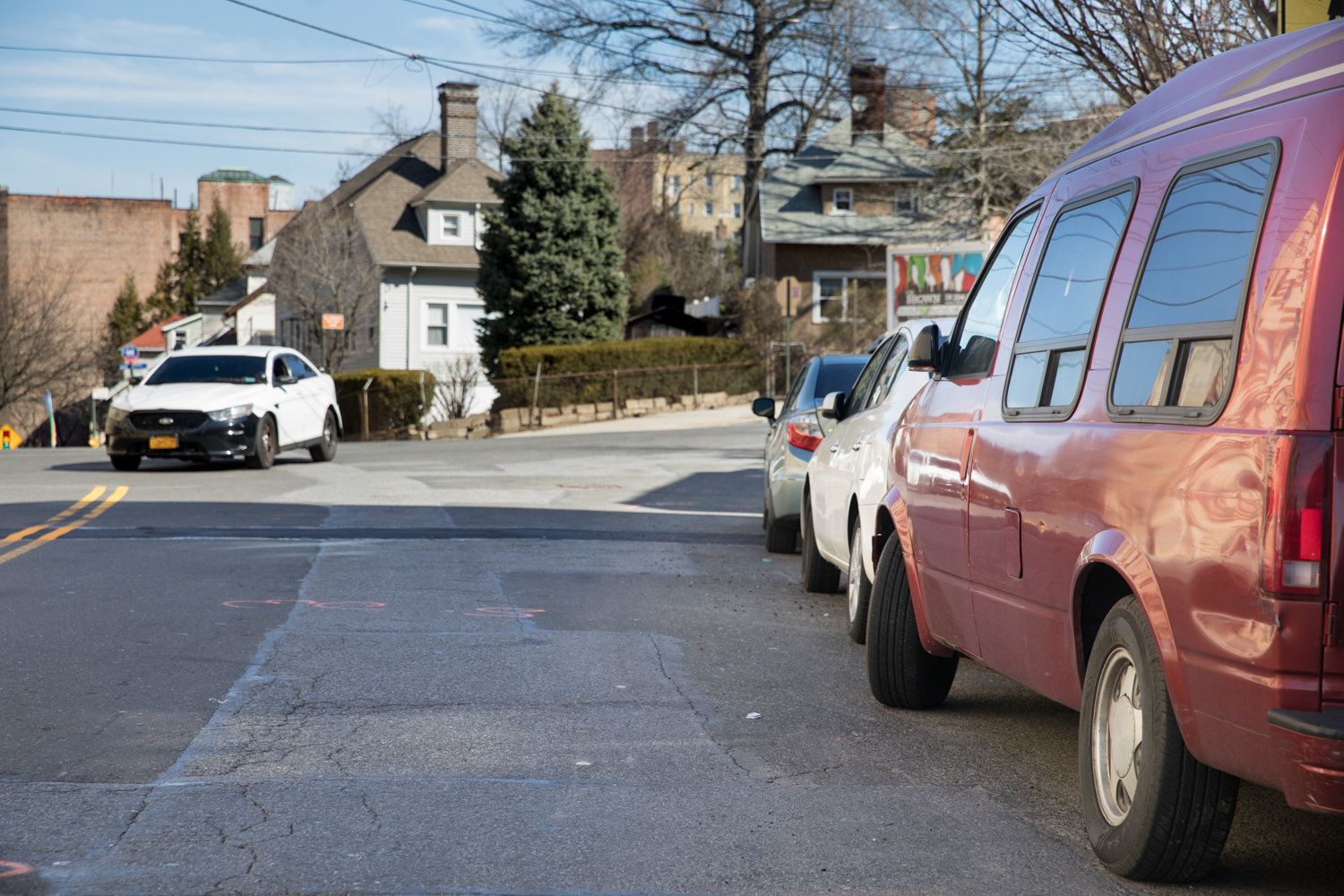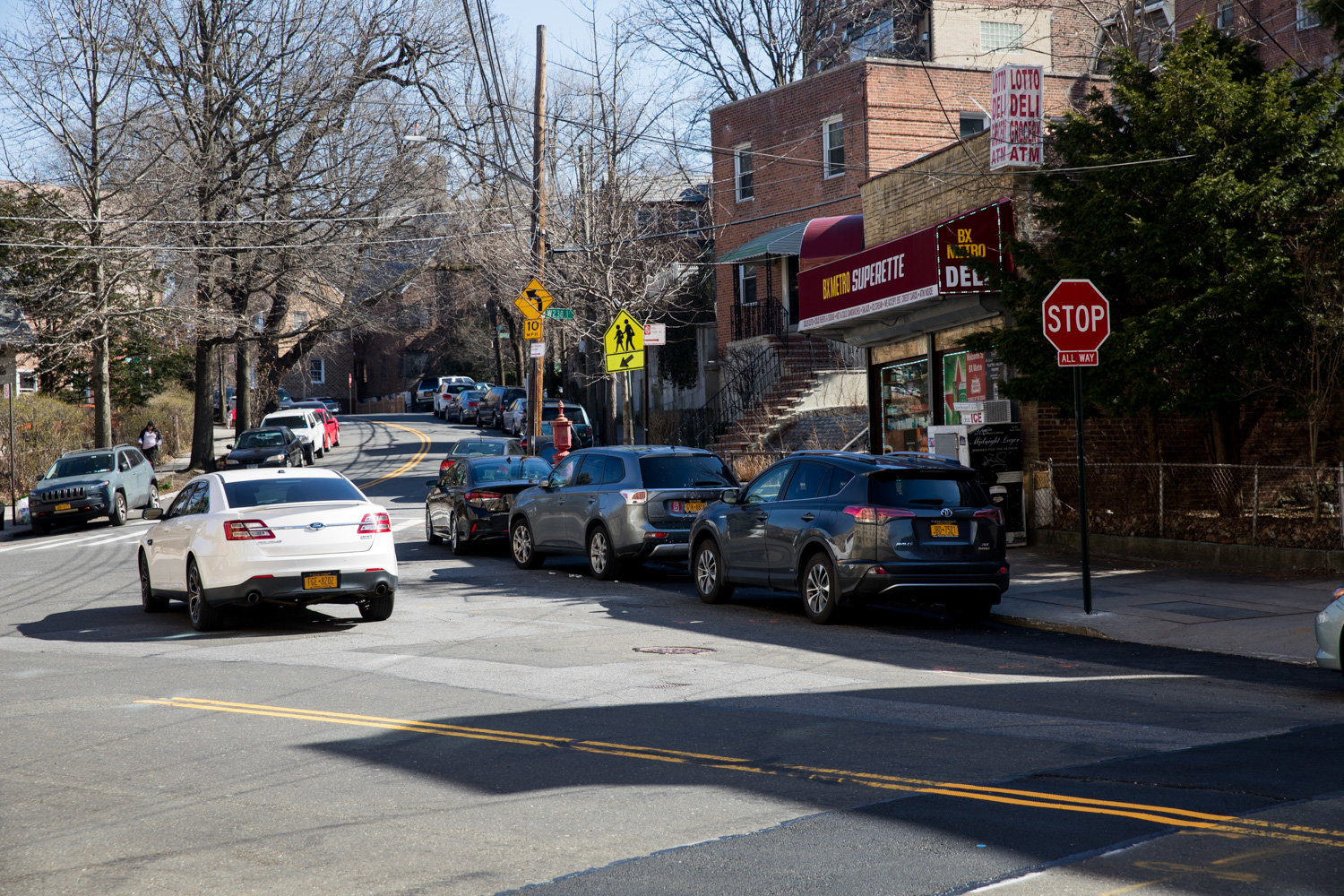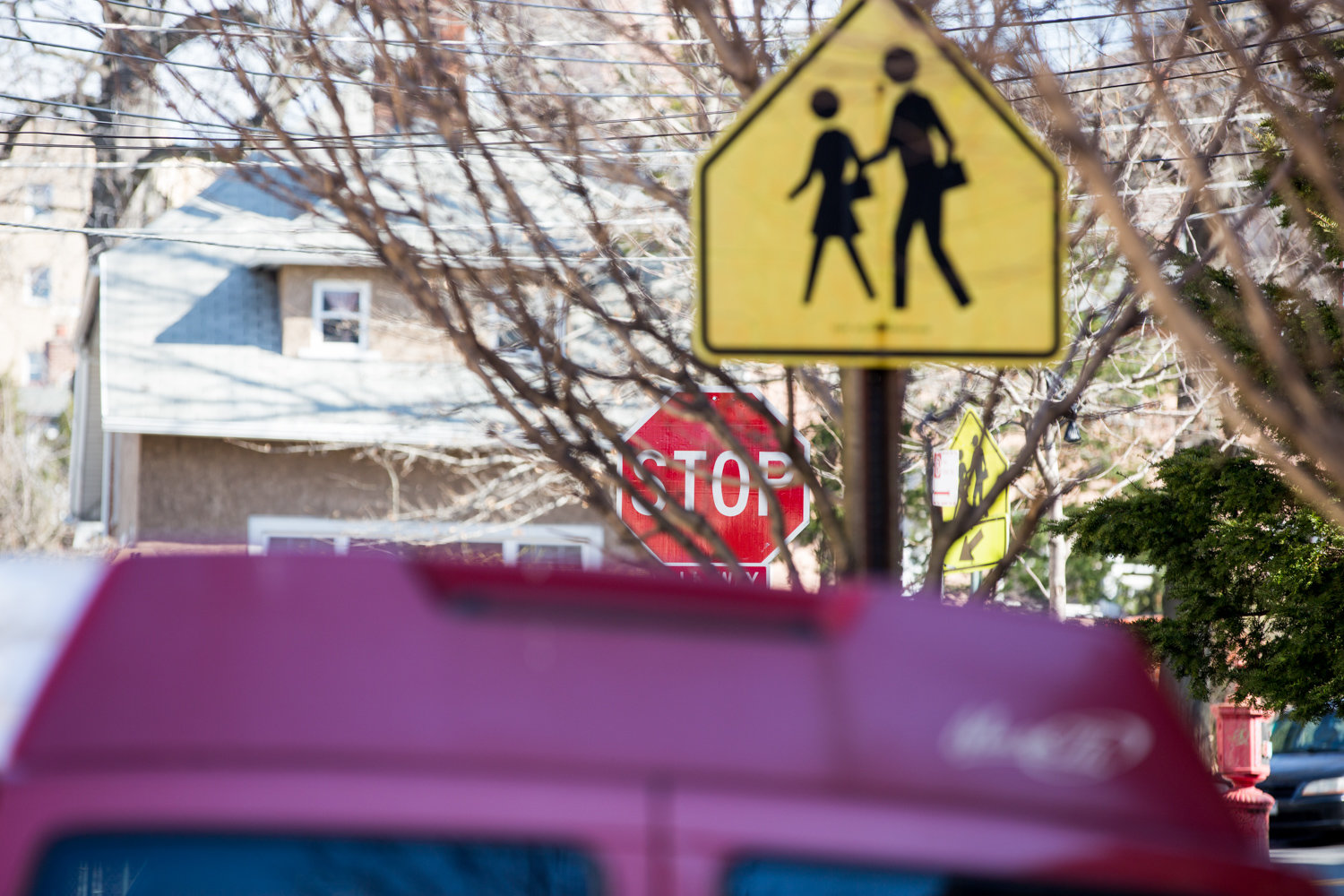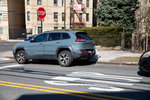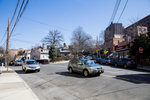Is DOT to blame for newest dangerous intersection?
It was 60 degrees in the Bronx on Sunday, spring-like weather topped only by the next day when it seemed spring turned to summer.
People were outside. Cars were on the road. And at the unusual intersection that joins Orloff Avenue with West 238th and Fort Independence streets in Kingsbridge, it was yet another day of danger.
Last month — without any warning to anyone — the city’s transportation department decided one stop sign stopping traffic coming down Orloff was no longer enough. Two more signs were added, stopping traffic coming up West 238th from Bailey Avenue, and down Fort Independence from Heath Avenue.
The problem? Many drivers aren’t stopping. Not because they don’t want to, but because they don’t know the new signs are there. Especially the sign intending to stop traffic on Fort Independence, tucked away on a sidewalk, seemingly out of sight — and out of mind.
In fact, of the more than 500 vehicles observed entering the intersection over a single hour Sunday afternoon, just short of 325 of them actually stopped. In fact, more than 180 blew right through a stop sign, or literally one car every 20 seconds.
For vehicles expecting others to stop, it’s an accident waiting to happen. And for pedestrians — it literally could be the difference between life and death.
“The importance of following stop signs is to prevent the very deadly T-bone crashes where one vehicle runs into the side — a vehicle’s weakest point — of another,” said Robert Sinclair, a spokesman for the automobile member service organization AAA. “The T-bone is particularly dangerous when a big heavy vehicle, like an SUV, runs into the side of a small light vehicle, like an economy car.”
Making intersections a little safer again
Much of the available traffic data memorializing failures to obey traffic control devices typically focus on red lights. Stop sign failures, however, can be a deadly proposition as well. A 2004 report from the U.S. Department of Transportation tracked more than 13,600 fatal vehicles crashes at stop signs between 1999 and 2000. Of those, 21 percent failed to obey the sign, while another 23 percent failed to yield the right of way.
That was actually significantly more than the number of fatal accidents involving traffic lights. The federal DOT found there were just under 10,000 fatal accidents during that same time, with 1-in-5 simply failing to obey the red light.
“I think the biggest issue at stop signs is when there is a four-way stop,” AAA’s Sinclair said. “Some drivers seem to not know when they should proceed. The answer is the order they arrived at the intersection. Then there are jerks that want to jump their turn.”
For this particular intersection near Kingsbridge Heights, there are just three stops, not four. But who should go when — and who is even stopping — could be confusing for drivers.
The city’s transportation department failed to add any striping to the street that would signal drivers there’s a stop sign nearby. In fact, the only such strip that exists is on Orloff, which had a stop sign long before the other two were added.
And that strip showed its effectiveness. Of the 92 cars observed using Orloff in that single hour on Sunday, 75 of them — or 82 percent — stopped. During that same time, 233 cars drove up West 238th from Bailey, and of those 74 percent actually stopped, despite the lack of street markings.
The stop sign from Fort Independence, however, might as well have been invisible. Of the 180 cars coming from Heath Avenue, just 72 of them — 40 percent — stopped.
“They need to stripe that intersection, and they need to paint the word ‘stop’ in the middle of the street,” said Dan Padernacht, chair of Community Board 8’s traffic and transportation committee.
“Quite frankly they shouldn’t have put those signs in until they were ready to paint the road.”
No need to tell anyone
Such drastic changes to a busy intersection — even if not a main stretch of road — generally is shared with Padernacht’s committee before such changes are made, he said. But why DOT failed to do that in this particular case is something the city agency doesn’t even feel it failed at.
“DOT routinely studies intersections for traffic controls based on requests from the public,” agency spokeswoman Alana Morales said in a statement to The Riverdale Press. “We normally do not make public presentations about these installations unless they are part of a larger safety initiative (or) project.”
Padernacht said he also wants to know why DOT made no effort to inform drivers the stop signs were there. Or at the very least, add striping to the street to give drivers wanting to follow the law a fighting chance.
Morales said striping would happen when DOT’s “markings season begins,” typically when the weather gets warmer. She also said officials will inspect the visibility of the new signs, after learning about the visibility issues from The Press.
The intersection enhancements aren’t on the agenda for the March 18 traffic and transportation committee agenda, but Padernacht said he expects the issue to come up. The committee also is expected to hear from DOT about changes to traffic patterns where Sedgwick, Dickinson and Goulden avenues converge in front of DeWitt Clinton High School.
While parts of the intersection are technically within Community Board 7’s jurisdiction, the main chunk of it falls within CB8, Padernacht said.
“You have these multiple intersections, and accidents are going to happen in three places there,” Padernacht said. “I haven’t seen all the crash data, but you’re going to have the ones at Sedgwick and Dickinson where those folks are taking those right turns, or racing to make the left turn before the light.”
While there have been no fatalities inside that intersection between 2013 and 2017, DOT officials note there have been 42 injuries — including one serious pedestrian injury — during that time.
DOT plans to not only add midpoint pedestrian islands on crosswalks traversing Sedgwick, but also close the Mosholu Avenue slip lane that merges with Sedgwick just before Dickinson Avenue. Padernacht believes there’s a much simpler solution: connect Dickinson with Goulden, and eliminate one of the “extra” intersections in front of Clinton.
The traffic and transportation committee’s March 18 meeting begins at 7 p.m., at Manhattan College’s Kelly Commons building, located at 3900 Waldo Ave. However, the meeting date, time and even location could be subject to change as new developments arise in the COVID-19 coronavirus situation.

